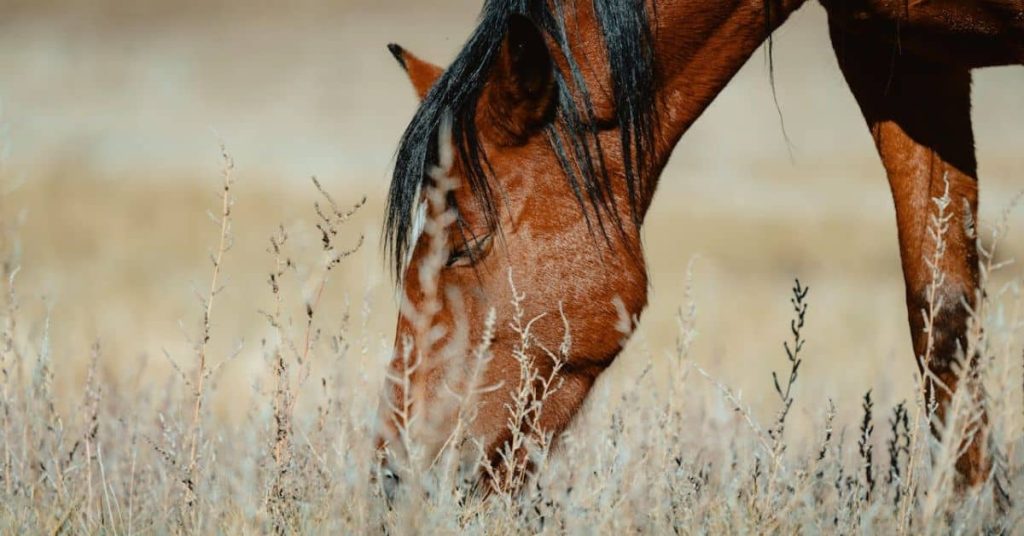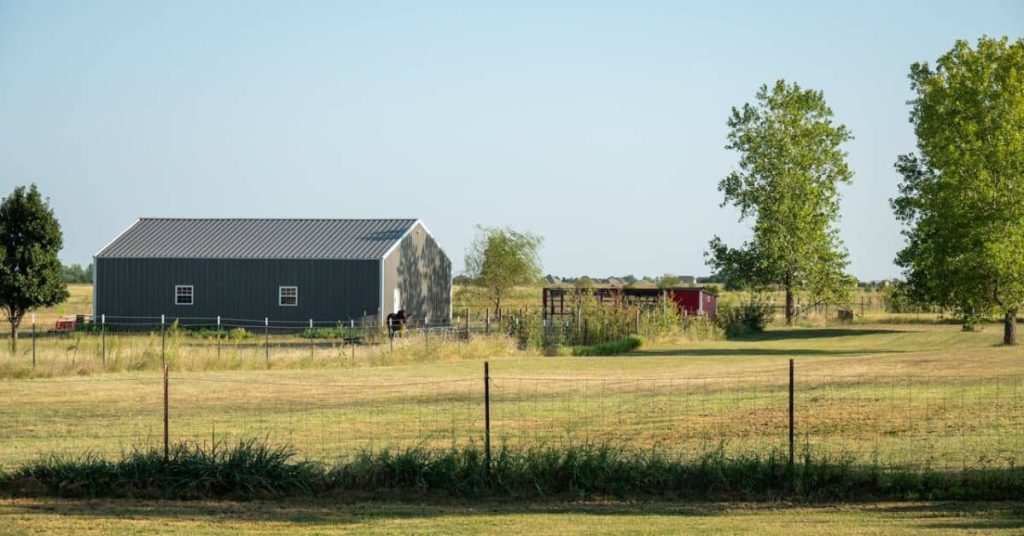Can You Still Homestead in Nevada
When folks ask me, “Can you still homestead land in Nevada?”, what they’re really wondering is: Is it still possible to live off the land out here without being tied to the grid or buried in legal paperwork?
The short answer is YES. But it’s not the old-school kind of homesteading where the government hands you 160 acres if you just show up. That ship sailed long ago. What you can do today, though, is build a modern version of that dream; buy your own land, live more independently, grow your food, raise animals, and cut your bills way down. Homesteading in Nevada is still alive. It just looks different now.
Note: If you’re short on time and just need quick answers, skip ahead to the FAQ section at the bottom of this guide.
What “Homesteading” Means These Days
There’s no government land giveaway happening in Nevada anymore. But don’t let that stop you. Today’s homesteading is more about creating a sustainable life on your own terms.
Here’s what that might look like:
- Buying a few acres of land in a rural county like Elko or Nye
- Setting up solar power, a well or water tank system, and maybe a small greenhouse
- Raising chickens, goats, or a garden that feeds your household (and maybe your neighbors too)
When we got our place in northeast Nevada, I wasn’t sure we’d be able to manage it without full utilities. I remember asking, “Can I really do this with just a pickup, some savings, and no experience?” The answer came slowly, one fence post at a time.
Where You Can Homestead in Nevada (And What It Might Cost)
If you’re looking at rural land, counties like White Pine, Esmeralda, and parts of Humboldt are still affordable. We picked up our parcel for under $1,000 an acre back in 2018. Prices have crept up, but you can still find good land under $2,500 an acre if you’re willing to be remote.
Tip: Call the county directly. Ask if the land you’re eyeing has water rights, legal access, and zoning for agriculture or residential use. That step saved us thousands.
What About Legal Requirements?
Nevada doesn’t have a “homestead act” like in the 1800s, but it does have something called a Homestead Declaration. That form protects a portion of your property from creditors. It’s especially useful if you’re putting your savings into land or building a house from scratch.
The good news? Filing that declaration is simple. One page, notarized, and dropped off at your county recorder’s office. We did ours on a lunch break in Ely.
Real Talk from the Community
“It’s not easy, but it’s worth it. I haul water once a week, cook with propane, and my kids know how to trim goat hooves.” – Jamie H., Nye County homesteader since 2020
“I wasn’t sure this would work, but five years later I’ve got chickens, a root cellar, and more peace than I ever found in Reno.” – Mark B., off-grid gardener near Winnemucca
Homesteading in Nevada is still possible in 2025, it just takes a little grit, a lot of questions, and a willingness to do things your own way. If you’re wondering whether it’s still doable, I’ll tell you this: people are out there doing it right now. You can be one of them.
Is Nevada a Good Place to Homestead
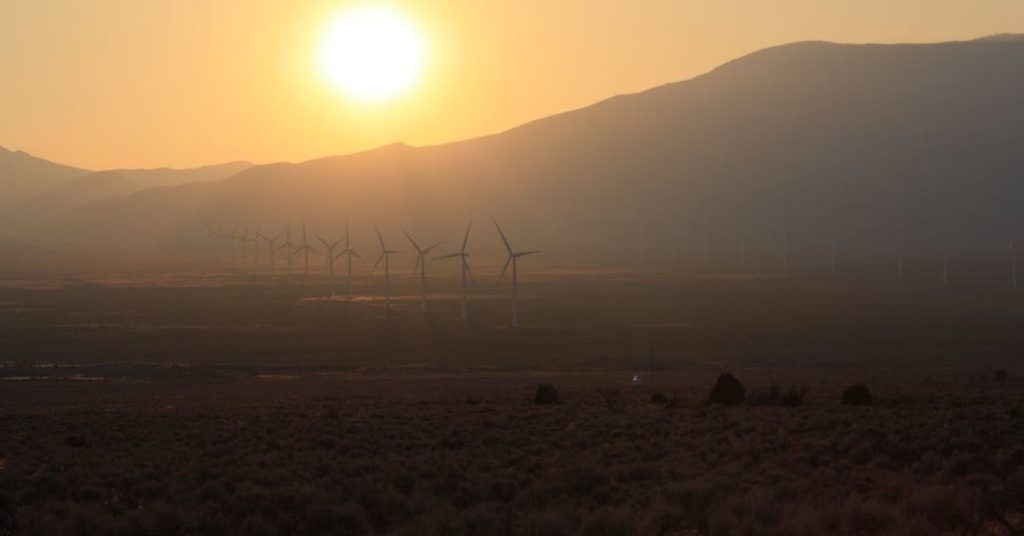
If you’ve ever typed “Is Nevada a good place to homestead?” into a search bar while staring out your apartment window or scrolling Zillow, you’re not alone. I asked myself the same thing when we first started looking for land back in 2017.
The answer? It depends on what you’re after and how much work you’re willing to do.
Nevada’s Pros for Homesteaders
Let’s start with what Nevada does offer:
- Low Property Taxes: Compared to many Western states, Nevada keeps taxes simple. Our annual tax bill for 12 acres and a small house sits under $700. That’s a blessing when you’re living off what you grow.
- Plenty of Sun: If you’re planning on solar power, you’ll love it here. Our panels power everything except a backup propane fridge. Even in winter, we usually have enough juice for lights, well pump, and a chest freezer.
- Fewer Building Restrictions in Rural Areas: Outside city limits, counties like White Pine and Esmeralda are pretty hands-off. You can build your cabin or bring in a shipping container without a lot of red tape. Always check zoning, but they’re way more flexible than most.
- Dry Climate = Fewer Pests: I haven’t seen a single tomato hornworm in six years. You might lose seedlings to wind or rabbits, but you won’t battle humid-heat diseases like folks in the South.
The Trade-Offs to Consider
Of course, no place is perfect. Here’s where Nevada makes you work for it:
- Water is Scarce: It’s not impossible, but you do need a plan. Some folks drill wells. Others haul water from town or install catchment tanks. We started out hauling and only got a well last year.
- Growing Season is Short: In the north, frost can sneak in by late September. A greenhouse or cold frame helps a lot. I wasn’t sure this would work at first, but our small hoop house made the difference between salad greens in May… or nothing at all.
- Distance from Services: Don’t expect fast internet or a grocery store around the corner. We drive an hour for feed or parts. It forces you to plan ahead, but it also means fewer distractions.
What Worked for Me
When we first got out here, I worried I’d made a mistake. No neighbors nearby. Constant wind. I didn’t grow up with any of this. But after our first year, I noticed something: we were spending more time outside. We were eating eggs from our hens. We were tired, but in a good way.
One of the best tips I got was from a guy in Eureka:
“Don’t try to grow everything. Pick three crops that like your dirt and grow those well.”
That advice saved my sanity.
What Locals Are Saying
“We moved from the coast to northern Nevada in 2019. I thought I’d miss the trees, but what I got was freedom. I’m not rich, but my land’s paid off and I sleep like a rock.” – Carla M., 4-acre homestead, Elko County
“Is Nevada a good place to homestead? If you want clean air, dry summers, and no HOA telling you what color to paint your barn, then yeah, it’s worth it.” – Mike R., off-grid builder, near Pahrump
Homesteading in Nevada isn’t for everyone. But if you’re okay with doing more for yourself, asking questions, and learning as you go, it just might be the place you’ve been looking for.
Homesteading in Northern Nevada
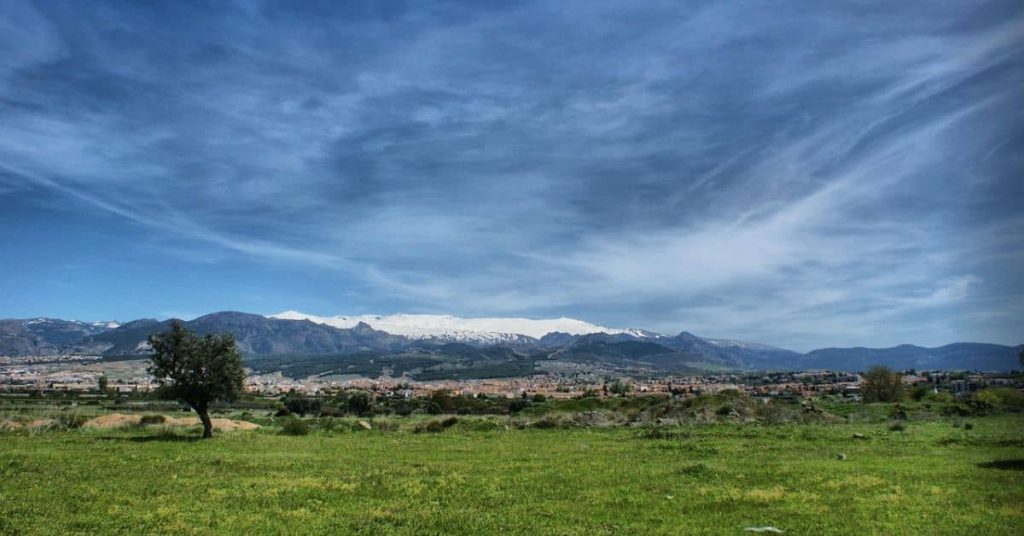
There’s something quiet and wild about homesteading in northern Nevada. It’s not loud or flashy. No fast-food signs or suburban traffic noise. Just wind, wide-open sky, and a kind of stillness you don’t find many places anymore.
That stillness, though it comes with challenges. This part of the state has unique conditions that make it both tough and rewarding for homesteaders. If you’re thinking about setting up here, there are a few things worth knowing from the start.
What’s the Difference Between Southern and Northern Nevada Homesteads
First question folks usually ask is, “What’s the difference southern vs northern NV homesteads?” The short version: water, temperature, and community size.
Northern Nevada tends to be colder, especially at night. We’re talking high-desert climate: dry, windy, with winter snow that can stack up if you’re near Elko or the Ruby Mountains. In summer, though, it’s cooler and less punishing than the southern heat near Las Vegas or Pahrump.
You’ll find:
- Shorter growing seasons (sometimes under 100 days)
- More affordable land per acre
- Less crowding and slower development
Southern Nevada has warmer winters, but less water. The land can be pricier and more regulated the closer you get to cities. My friend Tina lives outside Mesquite and she’s constantly dealing with zoning restrictions that I don’t face up north. Her words: “It’s warmer, but the red tape drove me nuts.”
Cheap Acreage for Sale in Northern Nevada
One of the main draws up here is the land cost. If you’re looking for cheap acreage for sale northern Nevada homestead land, you’ll find plenty of listings around Battle Mountain, Winnemucca, and the outskirts of Ely or Carlin.
But here’s the catch: cheap usually means undeveloped.
When we bought our place just outside Wells, it was bare dirt. No well. No septic. No power lines in sight. I wasn’t sure this would work, but we made it happen slowly. We camped on it for the first summer while we built a tiny cabin and started hauling water.
Here’s what I learned:
- Don’t skip the soil test. Even if you’re not planting a full garden, it helps to know what you’re working with.
- Ask about access roads. Some parcels look great online but are unreachable during spring melt.
- Double-check zoning. Just because a seller says it’s good for residential/ag doesn’t mean the county agrees.
Look for land with some kind of existing structure, even a shed. That can make a big difference with permits.
What Worked for Me in Northern Nevada
We chose northern Nevada because we wanted quiet, space, and a shot at owning land outright. We paid under $1,000 an acre and spent our weekends driving up with tools, fixing up the place little by little.
What worked? Starting small. Keeping our budget tight. And talking to locals at the feed store or library. Folks out here are a little reserved, but once they know you’re serious, they’ll help.
Voices from the North
“The wind here can knock your trash can halfway to Utah. But the air’s clean, the neighbors wave, and I grow better onions than I ever did in California.” – Ron S., homesteader in Elko County
“We bought 20 acres near McGill in 2020. It was raw land, no road. Took a year to get it livable. Was it hard? Yep. Worth it? Every minute.” – Alicia T., off-grid mom and goat owner
So yes, homesteading in northern Nevada is possible. You’ll trade convenience for space. Comfort for quiet. But if that’s what your gut’s been craving, you’re not alone. Plenty of us have made the leap and most of us aren’t looking back.
What Homesteaders Need to Know About Nevada’s 2025 Land-Use Zoning Updates
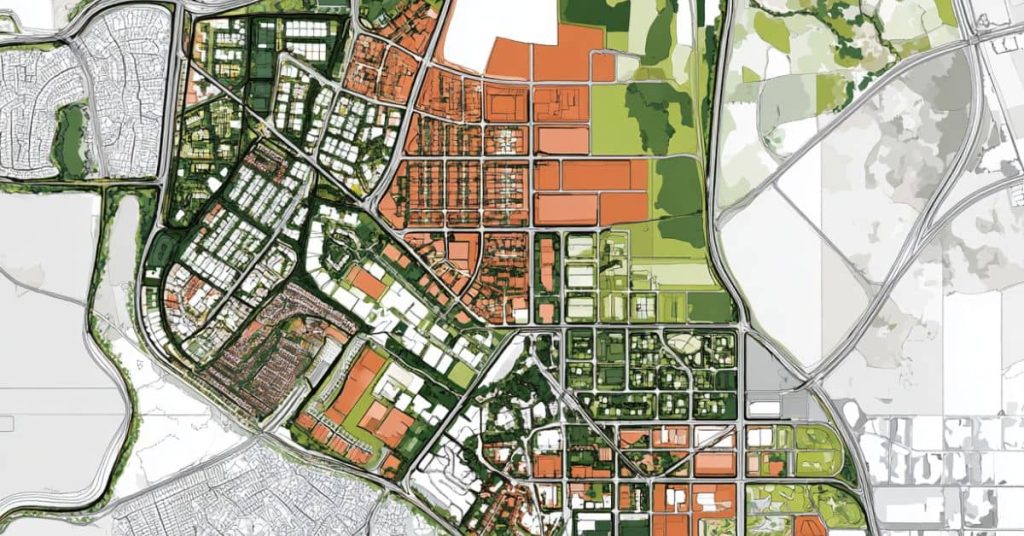
If you’re planning on homesteading in Nevada this year, you’ll want to know what’s changed in the zoning rules, especially if you’re hoping to live off-grid, build a cabin, or raise animals on your land.
I didn’t pay much attention to this stuff when we bought our place near Ely. We just assumed no one would care what we built out there. But by year two, I learned the hard way that county zoning codes do matter, especially when the inspector shows up and asks where your septic permit is.
As of 2025, a few counties have made updates that homesteaders really need to keep in mind.
Off-Grid Laws and What You Can Legally Build
Nevada is still one of the more flexible states when it comes to off-grid living, but there are limits.
Here’s what’s allowed (or restricted) in most rural counties this year:
- Compost Toilets: Legal in some counties like White Pine and Esmeralda, if you have a plan for managing waste responsibly. I wasn’t sure this would fly, but our simple bucket-and-sawdust system got the green light after we filed a sanitation plan with the health department.
- Shipping Container Homes and Tiny Houses: These are allowed in Nye and Humboldt if placed on a foundation and connected to either a septic system or an approved composting toilet. Just parking one on raw land and living in it full-time? Still a gray area in a few counties. Always ask first.
- RV Living: Most counties now limit full-time RV living to 30–90 days unless you’re building a permanent structure. That’s a change from just a few years ago when enforcement was looser.
What worked for us was submitting a basic sketch of our layout to the planning office. They appreciated the heads-up and gave us tips we wouldn’t have known otherwise.
County Rules on Livestock and Permits
If you’re dreaming about goats, chickens, or even a milk cow, you’ll want to check the updated animal codes for your county.
Here’s a breakdown of what’s changed in a few areas:
- Nye County now allows up to 12 poultry or 3 hoofed animals per acre in rural-residential zones. You’ll need fencing and a shelter structure. We had to adjust when our rooster count exceeded the limit, no one complained, but we got a warning letter after a neighbor filed a noise report.
- Elko County still gives the most freedom. You can raise livestock without special permits if you’re zoned ag or R1 and not within town limits. They’re reasonable, but expect to show that animals have shelter, feed, and water access.
- Washoe County, being more urbanized, is getting stricter. You’ll need animal permits for more than 6 hens, and they recently added rules for manure storage. A buddy in Reno built a small goat shed and got fined because he was too close to the property line, just 8 feet short.
Homesteading in Nevada means doing things your own way, but it doesn’t mean skipping the rules. The good news is that most rural counties are still pretty open to creative setups, as long as you keep it clean, safe, and documented.
“Don’t assume just because your land is ‘rural’ that you can do anything. Check first. I called the planning office three times before they gave me a thumbs up on our solar well system.”
– Lenny B., Nye County
“Zoning was the part I didn’t plan for. The rest of the homesteading I could learn on YouTube. The codes? You need a human to walk you through it.”
– Tara C., Washoe County
So, if you’re wondering how Nevada homestead zoning rules might affect your plans in 2025, the best advice is: call before you dig. It could save you money, time, and a big headache later.
Is Nevada Too Dry to Homestead

One of the first questions I asked myself was, “Is Nevada too dry to homestead?” You hear it a lot, especially from folks used to greener states. It’s a fair question.
Nevada is the driest state in the country. That’s not just trivia, it’s a real concern when you’re thinking about growing food, keeping animals, or even just getting water out of the tap. But dryness doesn’t mean it’s impossible. It just means you need a plan. Lots of folks are homesteading in Nevada right now, and they’ve figured out how to make it work, even in the dustiest corners.
How to Get Water for a Homestead in Nevada
Let’s talk options. How do I get water for a Nevada homestead? Well, there are three main routes: wells, hauling, and catchment.
- Drill a Well. If your land has water rights and you can afford it, a well is the most reliable choice. I didn’t have the cash for it when we started, so we hauled water for two years before saving up. Once we drilled, life got a lot easier, especially for the garden.
- Haul Water from Town. This is more common than you’d think. A lot of folks in places like Silver Springs or Crescent Valley use 275-gallon totes and make a weekly trip. We used to bring in about 1,000 gallons every ten days. It’s not glamorous, but it works.
- Set Up a Rain Catchment System. Even in Nevada, you can collect more water than you’d think. Just one 1,000-square-foot roof can give you over 6,000 gallons a year during a normal season, if you catch and store it right.
What worked for us was a combo. Hauling in the short term, then adding catchment tanks off our shed while we planned the well.
Nevada Rainwater Harvesting Laws
This part surprises a lot of people: rainwater harvesting is legal in Nevada, but only if you’re collecting from a rooftop for non-potable use, and you’re not infringing on someone else’s water rights.
No permits are needed for basic systems under 20,000 gallons. That was more than enough for us. We set up four IBC totes connected by gravity feed to a garden barrel. I wasn’t sure this would work, but we made it through two summers without needing irrigation from the well.
Make sure you:
- Collect from a solid, clean roof (metal works best)
- Use first-flush diverters if possible
- Keep barrels covered to avoid algae and mosquitoes
Well Drilling Costs in the Nevada Desert
Drilling a well in Nevada can be pricey. In 2025, most folks are paying between $15,000 to $30,000, depending on depth, rock layers, and proximity to the rig.
In our area near Ely, we had to go 340 feet. That was $22,000 all in, with casing, pump, and hookup. It took a month to get on the schedule and another week to finish.
Tips:
- Call at least three companies for quotes
- Ask neighbors how deep they had to drill
- Double-check your parcel’s water rights before signing any contracts
Resource: Nevada Division of Water Resources
So back to the big question, is Nevada too dry to homestead? Not if you’re prepared. It’s dry, yes. But it’s also full of people making it work with tanks, totes, and a little grit.
“We catch rain, reuse graywater, and haul once a month. It’s not easy, but we’ve got chickens, a garden, and clean clothes and I wouldn’t trade it for a cul-de-sac with sprinklers.” – Dani R., homesteader outside Tonopah
“Our well hit at 380 feet, and it cost more than our truck. But it’s our water now, and we’re finally planting fruit trees.” – Leo V., Humboldt County
If homesteading in Nevada is on your radar, don’t let the dryness scare you off. Just make water part of the plan from the start. It’s not a deal-breaker. It’s a puzzle and plenty of us have found ways to solve it.
How Are Nevada’s New Water Restrictions Affecting Homesteaders
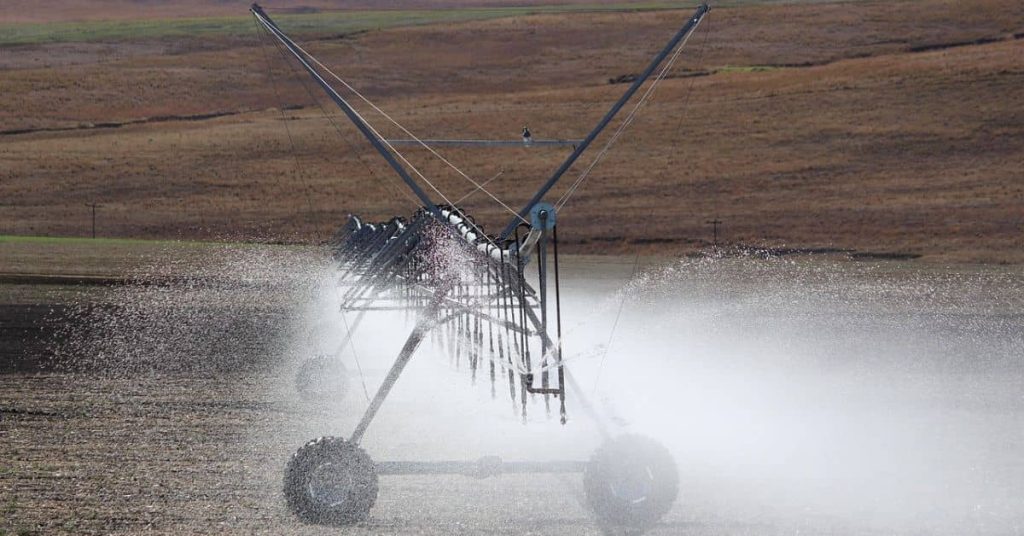
Water has always been a big topic out here, but lately it’s become the topic. If you’ve been wondering how the 2025 Nevada water restrictions might affect your homestead plans, you’re not alone. Folks from Elko to Pahrump are asking the same thing.
The state’s tightening things up in response to the ongoing drought and aquifer depletion. Whether you’re hauling water, drilling a well, or collecting rain, it matters more than ever that you understand what’s allowed. If you’re homesteading in Nevada, water use is no longer just a personal choice, it’s tied to local rules that are shifting fast.
New Permit Rules and Usage Caps
The biggest change in 2025? A lot of counties are limiting how much water you can draw, especially from private wells.
Here’s what’s happening on the ground:
1. Domestic Well Caps
Many rural homesteaders rely on domestic wells. The state now recommends a usage cap of 0.5 acre-feet per year per household. That’s about 450 gallons per day. It’s not a law in every county yet, but it’s being enforced in places like Lyon and Douglas.
For us, that number forced some hard thinking. We used to run a sprinkler on the orchard every other day. Now we rely more on drip irrigation and mulch, and we only water early in the morning.
2. New Wells Require More Paperwork
If you’re buying raw land, be prepared to apply for a permit not just hire a driller. In some places, the state is checking to make sure the water table isn’t dropping too fast in your area before giving approval.
I wasn’t sure this would work out when we filed last year. But after some back and forth, we got our permit with conditions. We have to submit an annual usage report now, which isn’t hard, just something to be aware of.
3. Livestock Watering Limits
If you raise animals, you can request additional usage allowances. Most counties will give you up to 0.25 acre-feet more if you show how many animals you’re supporting. We did this through our local conservation district office, and it made a big difference during calving season.
County-by-County Water Access
Every county handles water a little differently. Here’s a rough idea of what folks are dealing with:
- Elko County – Still relatively lenient, but new parcels under 5 acres are being asked to prove sustainable water use before permits are issued. Neighbors told us that one property was denied a drilling permit because three wells nearby went dry in 2024.
- Nye County – Actively enforcing meter installs on new wells. My buddy near Tonopah got one installed for under $500 and now just logs gallons monthly.
- Washoe County – Closer to Reno, things are tighter. You’ll need a hydrologist’s report for any new well, even in outlying areas like Cold Springs.
- Lincoln County – Still very open, but it’s changing. Local boards are considering caps due to falling well levels in Pioche and Alamo.
What worked for us was planning our homestead with water first. Not last. We prioritized our storage system, added rain catchment off the barn, and chose plants and livestock that thrive on less.
“Water’s always been our limiting factor. We don’t have a big pond or running creek, so we treat every drop like gold. Mulch, barrels, morning watering only, that’s what keeps our veggies going.” – Rachel L., homesteader outside Caliente
“If you’re coming out here thinking you’ll just drill and go, slow down. Ask the water board. Talk to your neighbors. It’s different than it used to be.” – Joel H., Lyon County
Water is life out here. And homesteading in Nevada today means working with what you’ve got, not taking it for granted. With the right setup and a good understanding of the new rules, you can still build something real and lasting. You just have to think ahead.
What You Can Raise or Grow on a Nevada Homestead

Folks often ask me, “What can you actually grow or raise when you’re homesteading in Nevada?” It’s a fair question. This isn’t the Midwest where you’ve got summer rains and deep soil. Here, you work with what you’ve got: dry air, short seasons, and wind that’ll snap your tomato cages clean in half.
But it can be done. You just need to pick the right breeds, crops, and timing. And keep a good shovel close.
Best Cattle and Chicken Breeds for Nevada’s High Desert
Nevada’s high desert climate means hot days, chilly nights, and sparse pasture. You need animals that can handle wide temperature swings and get by on less.
Here’s what’s worked for us:
Cattle
- Dexter: Small, hardy, and good for both milk and meat. Ours handled 100-degree days and sub-zero nights with no complaints.
- Hereford: Great for dry climates. Our neighbor runs a herd near Battle Mountain and swears by them.
- Corriente: Tough and heat-tolerant, especially if you plan to run cattle on rougher range land.
Chickens
- Rhode Island Red: Reliable layers that don’t mind the cold. We’ve kept them through snowy winters without heat lamps.
- Barred Rock: Good personality, solid egg layers, and they handle the wind better than our old Leghorns did.
- Easter Eggers: Fun for kids, lays colorful eggs, and ours seem less bothered by dry heat.
“I wasn’t sure my chickens would make it past their first dust storm, but I added wind breaks and a low coop door. Haven’t lost one to weather since.” – Angie T., Nye County
Rainfall and Growing Conditions in Northern Nevada
If you’re up north, especially around Elko or Ely, expect less than 10 inches of rain most years. The growing season’s short, sometimes less than 100 days. But don’t let that stop you.
Here’s what’s worked in our garden:
Crops that grow best in northern NV
- Potatoes
- Carrots
- Kale
- Garlic
- Snap peas
- Zucchini (if protected from wind)
Tactics that helped
- Raised beds with plenty of compost
- Windbreaks using straw bales or snow fencing
- Drip irrigation to stretch every gallon
I wasn’t sure squash would make it, but planting in mounded rows with mulch gave us a full harvest in late August.
Tip: Use a hoop house or cold frame if you want anything before June. The wind will stunt starts faster than cold ever did.
“My soil was dust when we moved in. Three years of rabbit manure and cover cropping and now it holds moisture like a sponge.” – Dave M., Humboldt County
Raising Goats in Nevada
Goats are a great fit if you want milk, brush control, and a bit of personality. But they’re not hands-off animals.
Things to know:
- Fencing matters: They will test it. We use welded wire with a hot strand at chest level.
- Shade is a must: Ours rest under a low-roofed pallet shelter during summer.
- Breed matters:
- Nubians do well here, but they’re loud.
- Kikos and Boers are tougher and good for meat.
- We started with two Alpines and still have one ten years later.
Forage is limited in most parts of Nevada, so plan to supplement with hay. In dry years, we buy alfalfa from a guy in Yerington who delivers once a month.
“I wasn’t sure goats were worth the hassle. Then we started making yogurt and soap. Haven’t looked back.” – Carla L., Lyon County
Resource: University of Nevada Extension (A solid source for region-specific livestock advice and crop calendars.)
Homesteading in Nevada isn’t about doing everything. It’s about choosing what grows well where you are. Learn your zone, pick hardy breeds, and ask your neighbors what’s worked for them. You’ll save yourself a lot of trial and error and still eat well.
How Homestead Laws Work in Nevada

When people first hear about homesteading laws in the state, they often ask, “How does a homestead work in Nevada?” It’s a good question, and the answer’s a bit different from what most folks expect.
This law isn’t about getting free land or living off-grid. It’s a legal tool that protects your primary residence from creditors. If you’re homesteading in Nevada, especially if you own your place outright or are paying it off, filing a Homestead Declaration might give you peace of mind you didn’t know you needed.
Nevada Homestead Exemption Rules and Amounts
Nevada’s homestead exemption lets you protect up to $605,000 in equity in your primary residence from general creditors. That means if you hit hard times, say a big medical bill or lawsuit, your home is shielded from being taken away.
It does not protect you from:
- Mortgages or unpaid property taxes
- Homeowners association dues
- Child support or alimony
“We filed ours the week after we closed on the land. I wasn’t sure it would matter way out in the desert, but it’s good to know we’ve got that extra layer of security.” – Brian H., Storey County
Do You Need to File a Homestead Declaration in Nevada?
If you own your home and live in it full-time, yes, it’s worth doing. If you’re renting, living on family land without ownership, or planning to flip the property soon, it may not be necessary.
Ask yourself:
- Is this my primary residence?
- Do I plan to stay here long term?
- Would I be in trouble if creditors came knocking?
If the answer is yes to those, go ahead and file it.
How to Fill Out a Homestead Declaration Form
The form’s short and straightforward. It asks for:
- Your name
- Your legal address
- A parcel number (found on your property tax bill)
- A notary seal
Print the form, fill it out, and take it to a notary (many banks will do this for free). Then file it with your county recorder’s office.
What worked for us was grabbing the form online, filling it in with a pencil first, then double-checking it against my tax paperwork. Took maybe 20 minutes total.
Where to Get the Nevada Homestead Declaration Form
You can download the form directly from:
- Your county recorder’s office website
- The Nevada State Bar (PDF guide linked below)
Or pick up a hard copy in person at the recorder’s office. They’ll often hand you a how-to sheet while you’re there.
Resource: Nevada State Bar Homestead Brochure (PDF)
Understanding Nevada’s Homestead Tax Exemption
This is separate from the legal protection form above. The Homestead Tax Exemption is a small break on your annual property taxes if you’re a qualified homeowner.
Each county handles it a little differently, but it usually knocks a few hundred dollars off your bill. You’ll file for it through your assessor’s office, not the recorder.
Homestead Exemptions in Washoe County
If you’re near Reno or Sparks, the Washoe County recorder’s office has a good online system. Their exemption follows state limits, but you’ll want to check zoning if your homestead also includes any business use (like selling eggs or soap from home).
We had a friend in Spanish Springs who ran into a surprise zoning hiccup after starting a home bakery. Always worth a phone call to check.
Homesteading in Clark County
In southern Nevada, things are more urbanized, and filings tend to take longer. Clark County will process your declaration, but it’s smart to bring an extra copy and have it notarized before you arrive.
It’s a little more formal, but still doable. Just be ready for longer lines at the office.
Declaring a Homestead in Las Vegas
Las Vegas homesteaders face more city-specific quirks. For example:
- If your parcel is part of an HOA, get their sign-off before adding structures.
- Urban zoning means you may not be able to raise livestock without a permit.
But filing your Homestead Declaration? Same form, same process. We’ve helped a few friends in Henderson and North Las Vegas get theirs done in under an hour.
So, how does a homestead work in Nevada? Legally, it’s a way to protect what you’ve built. Financially, it’s smart. Emotionally, it’s comforting, especially when you’re doing the hard work of building something from scratch.
If you’re serious about homesteading in Nevada, don’t skip this step. It’s quick, free or cheap, and could save you a whole lot of stress down the road.
How Inflation and Supply Shortages Are Changing Nevada Homesteading in 2025

If you’ve been homesteading in Nevada (or even thinking about it), you’ve probably noticed the rising prices. Feed is up. Seeds are pricier. Fencing? Don’t even get me started. Inflation has touched nearly every corner of rural life here in 2025.
And it’s not just about money. Supply chain hiccups have made it harder to get simple stuff like valves for water tanks or certain livestock minerals. The trick now is getting creative, leaning on your neighbors, and figuring out what you can do with what’s already around you.
Local Swaps and Barter Markets
When feed hit $26 a bag last fall, I started asking around. Turns out I wasn’t the only one looking for alternatives. In Elko and White Pine counties, folks have revived an old idea that’s gaining traction again, trading what you’ve got instead of buying more.
Here’s what’s popping up:
- Monthly Barter Meetups. A ranch outside Wells hosts a swap on the first Saturday of the month. Last time I went, someone was trading hay bales for goat milk soap.
- Facebook Groups. Look for county-specific pages like “Lincoln County Homesteaders” or “Northern NV Backyard Barter.” I traded six duck eggs for two pounds of rabbit feed last week.
- Seed and Tool Swaps. Smaller events at libraries or churches, especially in towns like Ely and Tonopah. Bring what you have. Take what you need.
“We ran out of chick starter mid-season. A neighbor had extra from a canceled order. We gave her firewood and a bag of turnip seed in return. It worked out for both of us.” – Gina P., Duckwater
Budget-Friendly Garden Fixes and DIY Hacks
When raised bed kits shot up in price, we went back to pallets. Not pretty, but solid. If you’re trying to homestead on a budget, these little fixes can help keep things growing without breaking the bank.
A few ideas that worked for us:
- Homemade Drip Irrigation. Use old hoses with pinholes. It’s not fancy, but it gets the job done. We ran ours off a 55-gallon barrel to keep from overusing the well.
- Repurposed Containers. Coffee cans, food-grade buckets, even cracked water troughs. Anything with drainage can grow something. Our cherry tomatoes lived in repurposed mineral tubs last year.
- Seed Saving. It’s not just a backup, it’s free. We saved from last year’s kale, radish, and squash. The germination wasn’t perfect, but enough came up to keep us fed.
- DIY Soil Boosters. We mix crushed eggshells, wood ash, and rabbit manure into our garden beds. I wasn’t sure this would work, but our carrots came out twice as thick this spring.
When stuff gets expensive or hard to find, the old-school methods suddenly make a lot more sense. You don’t need fancy gear to grow lettuce.
“The secret to homesteading in Nevada right now is grit. Not everything’s easy, but the folks who figure out how to trade, scavenge, and stretch: those are the ones who stick around.” – Mike S., Churchill County
So if you’re feeling the pinch, you’re not alone. Homesteading in Nevada in 2025 isn’t what it was five years ago. But it’s still possible. It just takes a little more talking, a little more swapping, and a lot more creativity. And honestly, those are the things that make it feel like a real community.
Real Talk: Moving from Vegas to a 40-Acre Homestead
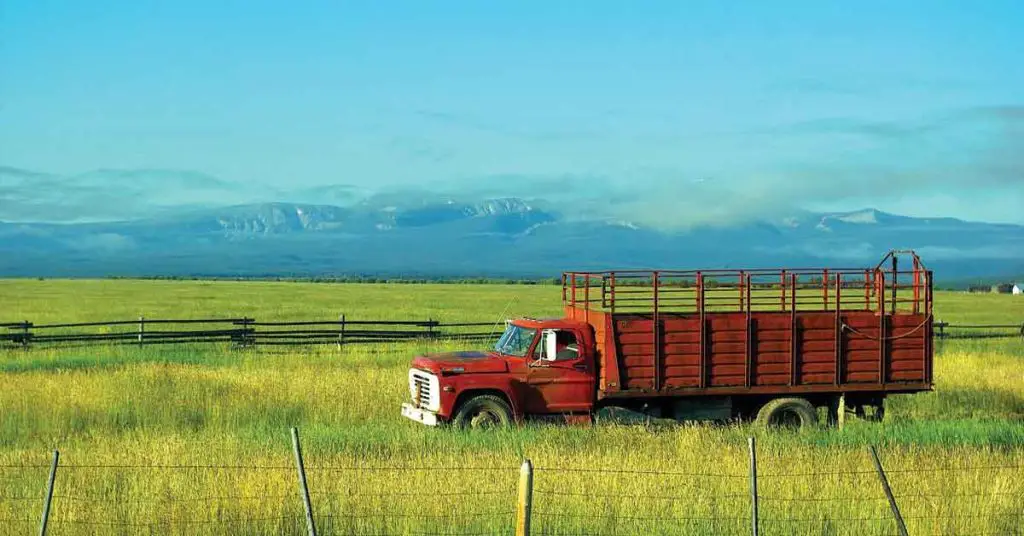
If you’re thinking about moving from Vegas to your own 40-acre homestead, you’re not alone. It’s something a lot of folks dream about, especially after years in the city grind. I used to live in North Las Vegas, two blocks from a gas station and a mile from a Starbucks. Now I haul my own water, heat with wood, and wave at more jackrabbits than people. Let’s just say it’s different, but not in a bad way.
Homesteading in Nevada comes with tradeoffs. Some are great. Some are frustrating. But if you’re honest with yourself about why you want to do it and what you’re willing to put up with, it can be one of the best decisions you make.
Pros and Cons of Off-Grid Living in Nevada
When we started looking at land, we knew we couldn’t afford anything with hookups. Off-grid wasn’t a choice, it was the only option in our budget range. We ended up on 40 acres outside Pioche with no power, no well, and one dirt road in and out.
Here’s what stood out right away.
Pros:
- Freedom. No HOA. No nosy neighbors. If I want to raise ducks in a kiddie pool and plant onions in an old bathtub, I can.
- Peace and quiet. I didn’t realize how much noise the city makes until I slept out here the first night. I heard owls. Not sirens.
- Cost. The land was cheap. We paid less than we would’ve for a used minivan.
- Skill learning. You don’t just buy a homestead. You build one. I’ve learned plumbing, solar wiring, and how to butcher chickens, all because I had to.
Cons:
- No instant hot showers. Solar showers are fine in July. In February? Not so much. It took us two years to get a proper bathhouse up.
- Internet is spotty. Forget streaming anything in real time. We use a cell booster and hotspot when we really need to connect.
- No trash pickup. Everything gets burned or hauled to town once a month.
- Isolation. Some days I miss waving to the mailman or grabbing milk at midnight. You have to plan ahead out here.
What worked for us was easing into it. We didn’t try to build everything at once. We started with a trailer, then added a shed, then a little bunkhouse. I wasn’t sure this would work long-term, but now we can’t imagine living any other way.
“People think moving to land is the end of their stress. Really, it’s the start of a different kind. But at least it’s mine now, not someone else’s.” – Carl B., Lincoln County
“I lived in Vegas 30 years. Never thought I’d be hauling water in a truckbed. But here I am, and I sleep better than I ever did with AC and cable.” – Denise M., former Clark County schoolteacher
So if you’re thinking about moving from Vegas to your own 40-acre homestead, just know this: it’s not about perfection. It’s about possibility. Homesteading in Nevada won’t be the easiest road you’ll take, but it’ll teach you who you are real fast. And sometimes, that’s worth more than the comforts you left behind.
Solar Power for Desert Homesteads in Nevada
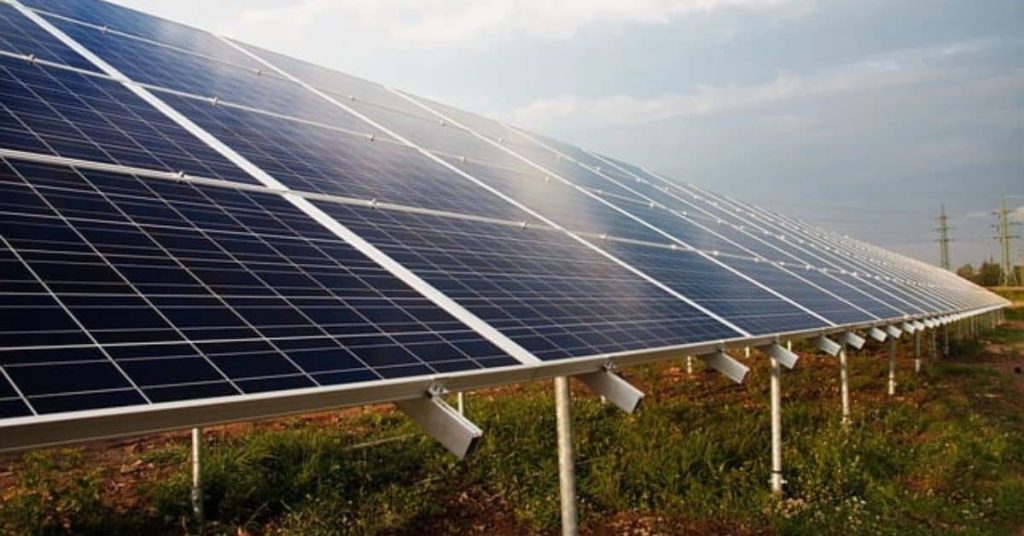
If you’re homesteading in Nevada, odds are you’re at least considering solar. Out here, sunshine’s one thing we’ve got plenty of. Most days, even in winter, our panels are pulling in more than enough to keep the fridge cold and the lights on. But like everything on a homestead, it takes some figuring out.
When we first moved out to our land near Alamo, I wasn’t sure this would work. I’d never wired a panel in my life. But we didn’t have utility hookups, and running power from the grid would’ve cost more than the land itself. So we pieced together a small off-grid solar setup and figured it out one step at a time.
What worked for us was that we started small:
- Four 100-watt panels
- Two 12-volt deep cycle batteries
- A used inverter from Craigslist
- One charge controller
It ran lights, charged phones, and powered a small chest freezer. That was it. But it worked.
Once we got used to checking battery levels and watching our usage, we scaled up. Now we’ve got 1200 watts of solar, four lithium batteries, and enough juice to run a full-size fridge, a chest freezer, fans, and a Starlink satellite for internet.
Questions You Might Ask Yourself
- Will I need to run AC or just fans?
AC can drain batteries fast. Most desert homesteaders rely on swamp coolers or well-insulated sleeping spaces.
- Can I install this myself or should I hire it out?
If you’re comfortable with basic wiring and can follow instructions, DIY is doable. If not, at least pay someone to check your setup before flipping the switch.
- How much sun is too much?
Weirdly, extreme heat can lower panel efficiency. Our best output is in spring and fall, not July. Keep your batteries shaded and ventilated.
Practical Tips for Solar Panels in the Nevada Desert
- Panel Tilt Matters – Mount your panels at an angle to match your latitude. In southern Nevada, that’s about 35 to 38 degrees. Keeps them clean, too.
- Dust is Real – Clean your panels at least once a month. Even a light layer of dust can drop your output 10 to 20 percent. We use an old mop and a bucket of water early in the morning.
- Battery Protection – Heat kills batteries. We store ours in an insulated shed with a vented roof. I wasn’t sure this would make a big difference, but after frying one AGM battery in our first summer, I’m now a believer.
- Backup Power – We keep a small propane generator on hand for winter or cloudy weeks. It’s only needed a few times a year, but when you need it, you need it.
Local Stories and What Others Are Doing
“Our starter system was a Harbor Freight kit, and it ran a few lights and the radio. Now we’ve got enough to run two freezers and a laptop. Not bad for something we built ourselves.” – Nate F., Mineral County
“We looked at wind power, but it was too inconsistent. Solar’s been solid. I track our daily output like clockwork. It’s kind of addictive.” – Lisa G., near Tonopah
If you’re asking yourself whether solar panels for a desert homestead in NV are worth it, the answer is yes, but only if you plan smart. Start small, learn as you go, and don’t overspend in the beginning.
Homesteading in Nevada means working with what nature gives you. In this case, the sun gives you a lot. Just make sure you catch it right and treat your batteries with care.
How to File a Homestead Exemption in Nevada

If you’re new to homesteading in Nevada, figuring out what to do with all the legal stuff can feel like learning a second language. One thing that comes up a lot is the Homestead Declaration. It’s not complicated once you’ve seen it, but it does trip folks up if you’ve never filled out county paperwork before.
When we filed ours, I wasn’t sure this would work the way folks online said it would. But after a notary visit and a 10-minute stop at the county office, it was done and now we sleep a little better knowing our land’s legally protected from creditors up to the current limit.
Nevada Homestead Form Example
The Homestead Declaration form in Nevada is one page. It looks more intimidating than it really is.
Here’s what you’ll see on the form:
- Full Legal Name(s) – Use what’s on your deed or mortgage.
- Physical Address – Not a P.O. Box, your actual property address.
- Assessor’s Parcel Number (APN) – You can find this on your property tax statement. If not, look it up on your county assessor’s website.
- Type of Dwelling – You’ll check if it’s a house, condo, or manufactured home.
- Notary Block – You’ll need to sign it in front of a notary public.
What I did was printing the form and filling it out with pencil first. Then I rewrote it neatly once I was sure it was right. I kept a scanned copy too, just in case.
County Recorder Offices and What to Expect
Once your form is filled out and notarized, you take it to your county recorder’s office. Each county has one, and most are inside or near the county courthouse.
Expect the following:
- A small filing fee: Usually $20 to $25. Cash, check, or card, depending on the office.
- A quick review: The clerk will check it’s complete, then stamp and file it.
- Proof of filing: Ask for a certified copy for your records. It’s worth the extra dollar or two.
We walked ours into the White Pine County office and were out in less than 10 minutes. The lady behind the counter even helped double-check our APN.
Office Hours for Clark County Homestead Filings
If you’re living in Las Vegas or anywhere in Clark County, the recorder’s office is at:
Clark County Government Center
500 S Grand Central Pkwy
Las Vegas, NV 89155
Office Hours: Monday to Friday, 8 a.m. to 5 p.m.
You can also file by mail, but it’s easier to walk in if you’re nearby.
The line might be longer here than in rural counties, so go early. One friend of ours waited almost an hour on a Monday afternoon. Another went first thing Friday morning and got in and out in 15 minutes.
“We filed ours the same week we moved in. I wasn’t sure we needed it right away, but with how things go these days, better safe than sorry.” – Terry J., Las Vegas
“I printed the form at the library and walked it into the Nye County office. They were super helpful, told me I was missing a line and helped me fix it right there.” – Linda V., Pahrump
So if you’re looking up how to fill out a Homestead Declaration in Nevada, just know it’s a small step that can save you a lot of stress. It’s one of the easier things about homesteading in Nevada, and once it’s done, it’s done for good, unless you move.
Where to Get Official Homestead Law Information in Nevada

If you’re doing any kind of homesteading in Nevada, you’ll come across folks with strong opinions on what you can and can’t do. And while neighborly advice is great, sometimes you need to go straight to the source. Whether you’re filing a Homestead Declaration, looking up zoning, or just trying to see what rights you have as a homeowner, it helps to read the real thing, not someone’s half-right summary on Reddit.
I wasn’t sure this would work when I first tried navigating Nevada’s legal websites, but they’re not as bad as I expected. You just have to know where to click.
Nevada Legislature Statute NRS 115
This is the main statute that covers homestead protections in the state. NRS 115 spells out:
- What counts as a “homestead” (your primary residence)
- How much equity you can protect (up to $605,000 in 2025)
- What kinds of debts it protects you from (credit cards, lawsuits)
- What debts it doesn’t (mortgages, taxes, child support)
If you’re thinking, “Do I really need to read the statute myself?”, I get it. It sounds dry. But scanning it helped me catch a small clause that would’ve affected how I titled our property. It’s written in plain language, at least by legal standards.
You can find the statute here: Nevada Revised Statutes – NRS 115
Official PDF Guides and Forms from the State Bar
If you’re more of a visual learner (like I am), the Nevada State Bar has downloadable brochures that explain homesteading protections, exemptions, and the filing process with real examples and clean formatting.
Here’s what you can expect from their PDFs:
- Sample filled-out forms
- Checklists for what to bring when filing
- Explanations of legal terms in plain English
What I did was printing out one of their forms and using it side-by-side with the one I was filling out for real. It made the process feel way less intimidating.
You can grab the PDF here: Nevada State Bar Homestead Brochure (PDF)
“I kept seeing mixed advice in forums about whether you had to refile if you moved counties. Turns out, the answer was on page two of the brochure.” – Darren L., Nye County
“I thought I’d done it right, but the form I used was old. The PDF from the state bar saved me from redoing it all.” – Rhonda P., Elko County
When you’re homesteading in Nevada, it’s tempting to ask around instead of diving into legal docs. But when it comes to protecting your home and doing things by the book, nothing beats the official stuff. Bookmark it now, thank yourself later.
Forums and Advice from Real Nevada Homesteaders
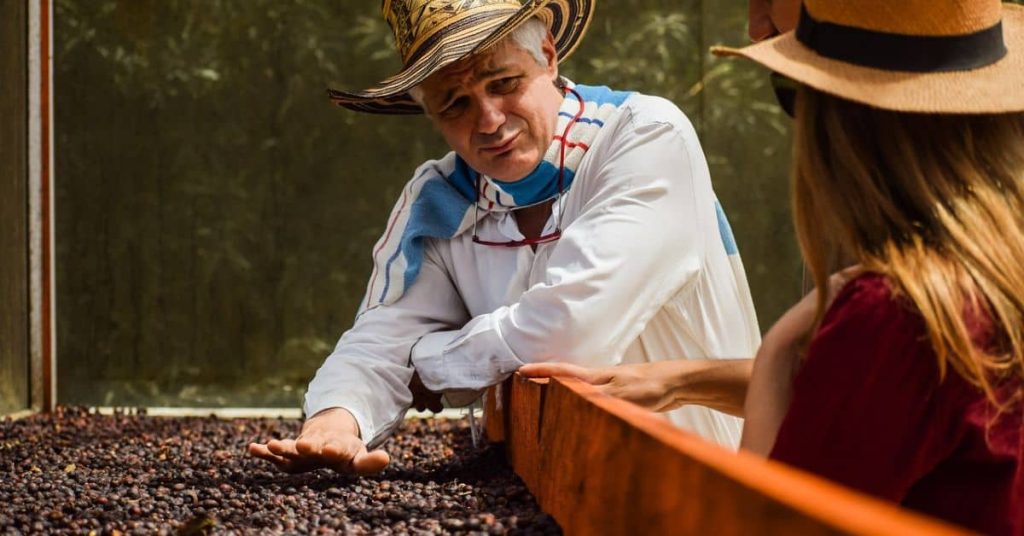
No matter how many books you read, there’s nothing quite like hearing from someone who’s living it. Especially when it comes to homesteading in Nevada, where what works in one county might flop completely just a few hours away. That’s why online forums and local blogs are some of the best resources you can tap into. Not because they’re perfectly written or expert-certified, but because they come from folks who’ve actually had their pipes freeze, who’ve fought off coyotes, and who know what it’s like to haul water in a snowstorm.
I wasn’t sure this would work when I first started asking questions online. I figured I’d get laughed at for not knowing basic stuff. But the truth is, people were helpful. Some shared links, others posted pictures of their setups, and a few just said, “Yep, been there.” That encouragement kept me going on the days when everything felt like too much.
Helpful Reddit Threads on Homesteading in Nevada
The r/OffGrid and r/Homesteading subreddits are full of Nevada-specific advice, if you know where to look. Search terms like “Nevada water rights,” “solar in Nye County,” or “growing in Zone 5a” can turn up some real gems. Look for posts with actual photos, not just speculation.
Three standout threads I bookmarked:
- “Off-Grid Living Near Ely: What I’ve Learned in 3 Years”
This post covers solar layouts, soil amendments, and the joys of battling high winds.
What worked for them: burying water lines at least 3 feet deep.
- “Best Chicken Breeds for the Desert?”
A long thread with firsthand tips from people raising birds in White Pine and Lincoln counties.
Popular answer: Red Stars and Leghorns.
- “Truck Camping Full-Time While Building a Homestead in NV”
Eye-opening glimpse into what it’s really like to start from scratch with no power or plumbing.
Biggest takeaway: patience and a good tarp go a long way.
Local Blogs Like the Golconda Homestead Community
One of my favorite finds was a little blog run by a family in Golconda, NV. They don’t post every week, but when they do, it’s real and useful. Things like:
- How to build a DIY greenhouse with wind-bracing for Northern Nevada
- Their exact rainwater collection setup (with photos)
- What they grow each season, and what flopped
Another one I check is “Nevada Roots” (based in Pershing County). They’ve got detailed breakdowns of building codes by region, which saved me a phone call more than once.
What worked for me: I emailed one of the blog owners about fencing options. She wrote back with a list of local stores, plus what didn’t work for them on sandy soil. I wasn’t sure she’d even reply, but she did and now I check their blog every few weeks.
“Reddit helped me figure out why my solar batteries were dying fast. Turned out I had the wrong charge controller. Someone linked a diagram and walked me through it.” – Devin S., Lyon County
“We used that Golconda blog to plan our whole spring garden. They’re in almost the same climate, so it saved us a bunch of trial and error.” – Maria F., outside Winnemucca
If you’re just starting out with homesteading in Nevada, don’t go it alone. Ask questions. Read the comments. Share your own wins and fails. Sometimes the best advice doesn’t come from a fancy guide, it comes from someone with dirt under their nails and a signal strong enough to post on Reddit.
Final Thoughts on Homesteading in Nevada
By now you’ve probably realized homesteading in Nevada isn’t about finding the perfect setup, it’s about building something that works for you. It’s a mix of practical challenges, local quirks, and a whole lot of learning as you go. Some days you’ll be proud of what you’ve built with your own two hands. Other days, the wind knocks down your fence, the goats escape, and you wonder if it’s all worth it.
I wasn’t sure this would work when we started. But a few years later, I’m still here, hauling water, planting seeds, and watching sunsets I never saw in the city. Nevada isn’t easy. But it’s honest. And that’s why a lot of us stay.
What to Remember Before You Start
- Water is everything. Don’t even consider land that doesn’t have a solid water plan. Well permits, catchment systems, or trucked water, know your options and costs upfront.
- Zoning laws matter more than you think. What you can do on your land changes county to county. Check the latest rules about building, livestock, and off-grid living before you buy.
- Cheap land isn’t always a good deal. If it’s hard to access, miles from a gas station, or in a floodplain, it’ll cost you more in time and stress than you save.
- Find your people. Whether it’s Reddit, local Facebook groups, or a neighbor down the road who’s been at it longer, don’t go it alone.
- Start small. Don’t try to grow everything, raise every animal, and build five structures your first year. Pick one thing. Get good at it. Then add another.
What Helped Me Most When I Was Starting Out
Looking back, I think the thing that helped me most was letting go of the idea that it had to look a certain way.
I thought I needed a big barn, fancy solar setup, and a pantry full of home-canned food from day one. But here’s what actually worked:
- A simple water haul system and two 55-gallon drums
- One raised bed with carrots and onions
- A $20 composting toilet setup in a shed we built out of pallets
I wasn’t sure this would be enough. But it was a start. And that’s what matters most.
“We started with just chickens and a camp stove. Every year we add one new thing. This year it’s a greenhouse. Last year it was a gravity-fed sink.” – Jeremy T., Nye County
“The best advice I got was, ‘Don’t wait until it’s perfect to begin. Just begin.’ That’s what I tell new folks now.” – Cindy M., Elko
Homesteading in Nevada is doable. It’s not always pretty, and it won’t always go to plan, but if you’ve got a good attitude and a willingness to adapt, there’s room for you here. Start where you are. Use what you have. And remember: most of us are figuring it out as we go, too.
For more hands-on advice, check out our guides on smart homestead layout planning and spring prep tips that work well in Nevada’s tough climate.
- Tips for Successful Homestead Layout Planning in 2025 (Covers rainwater harvesting, solar orientation, and smart placement of buildings and gardens: perfect next steps for your Nevada setup.)
- 14 Tips for Homesteading in Mid‑Spring 2025 (Offers practical seasonal guidance on prepping soil, planting timing, and water management, ideal for adapting those tips to Nevada’s shorter seasons.)
FAQ: Homesteading in Nevada

Q1: Can you still homestead land in Nevada today?
Not in the old “free land” sense, but YES, you can still live off-grid, grow food, and claim a homestead exemption to protect your home. You’ll need to buy the land and follow county zoning laws.
Q2: How much does it cost to homestead in Nevada?
Land can run anywhere from $500 an acre to over $10,000 depending on location and access to water. Most folks spend at least $15,000–$50,000 to get started with land, fencing, a basic shelter, and power.
Q3: Is it legal to live off-grid in Nevada?
Yes, off-grid living is legal in most counties, but you’ll need to follow local building codes and get permits for septic, wells, or tiny homes. Some rural counties are more flexible than others.
Q4: What crops grow well in Northern Nevada?
Short-season veggies like carrots, onions, kale, and potatoes do well. If you’re patient and prep the soil right, you can also get squash, beans, and even tomatoes with hoop houses or row covers.
Q5: Do I need to file a homestead declaration in Nevada?
If you own and live on your land, yes, it’s worth filing. It protects your equity (up to $605,000 in 2025) from creditors and only takes a few minutes to do with a notary and your county recorder’s office.
Disclaimer: The information provided in this article is for general informational purposes only and is not intended to be a substitute for professional advice. The author of this article does not claim to be an expert in homesteading and the information provided should not be relied upon to make decisions about your own homesteading journey. Please do your own research and consult with a qualified professional before making any decisions about your homestead.
Share via:
Shaun Alexander is the main writer and editor for HomesteadingSimple.com. With a strong passion for homesteading and sustainability, Shaun has dedicated his life to learning and sharing information about a simple, fulfilling existence tied to the land. His expertise ranges from gardening and livestock management to off-grid living and DIY projects, reflecting the diverse skills necessary for a successful homesteading lifestyle. Shaun’s goal is to inspire and educate others about the possibilities of homesteading, whether in rural, suburban, or urban settings, and to provide practical advice and tips for both beginners and seasoned homesteaders. He believes in a future where more people return to their roots, embracing a life of self-sufficiency and harmony with nature.

